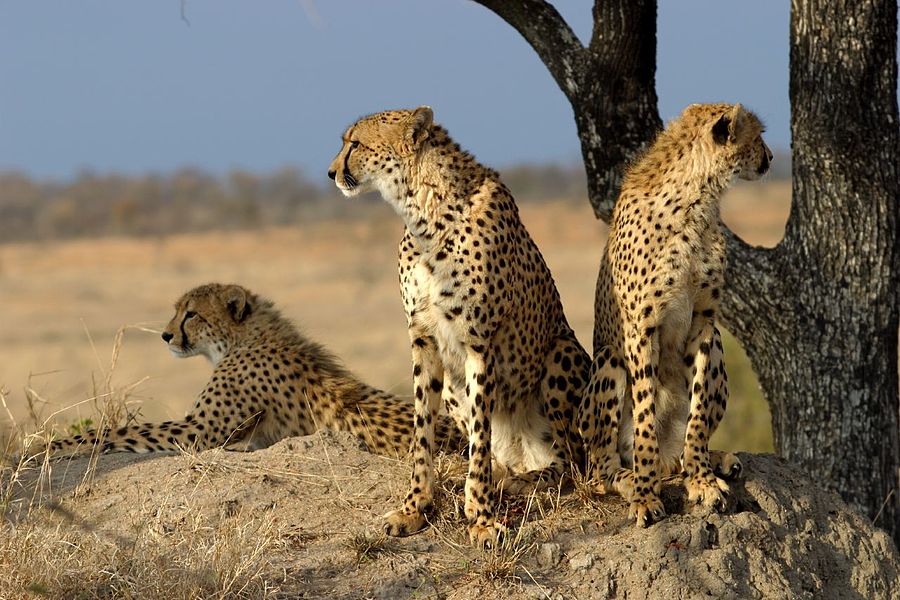Facts About Cheetah
The cheetah, a large feline found in Africa and central Iran, is renowned for being the fastest land animal, capable of reaching speeds between 80 to 128 km/h. Built for speed, cheetahs possess a lightweight frame, long slender legs, and a lengthy tail. They stand about 67–94 cm tall at the shoulder, with a body length ranging from 1.1 to 1.5 meters, and they weigh between 20 and 65 kg. Their coats are a striking tawny to creamy white, adorned with solid black spots.
Unlike many other big cats, cheetahs are quite social. They form groups that include females with their cubs, male coalitions, and solitary males. Cheetahs are primarily active during the day, with hunting being their main activity. They prefer to prey on small to medium-sized animals, particularly medium-sized ungulates like impalas and gazelles. Breeding occurs year-round, with females typically giving birth to three to five cubs. Unfortunately, these cubs face high risks from predators such as other large carnivores.
The cheetah faces numerous threats, including habitat loss, human-wildlife conflict, poaching, and diseases. Currently, there are approximately 7,100 cheetahs left in the wild, and the species is listed as Vulnerable on the IUCN Red List. To combat these threats, various conservation efforts are being implemented to protect cheetahs and their habitats.
Cheetahs have left their mark on art, literature, advertising, and animation. They appear in ancient cave paintings and modern artworks alike. Historically, cheetahs were even tamed for hunting purposes. However, breeding cheetahs in captivity has proven challenging, with high mortality rates among captive populations. These majestic animals also feature in cultural references, serving as mascots, namesakes, and characters in entertainment media.

 Central African Republic
Central African Republic